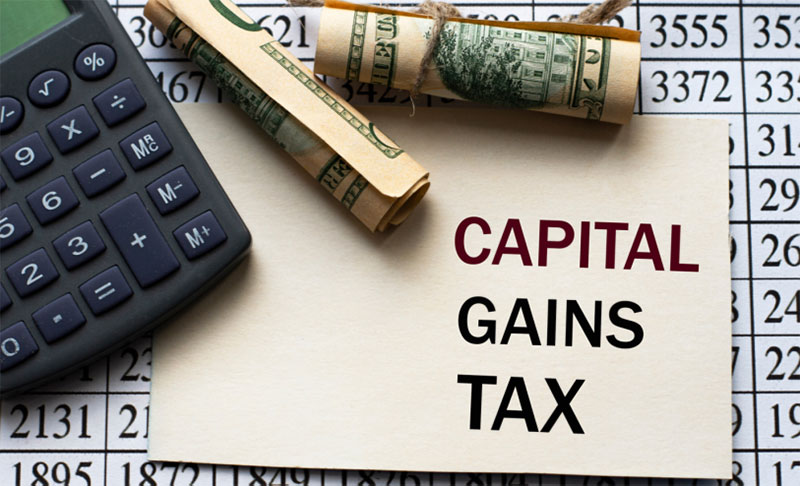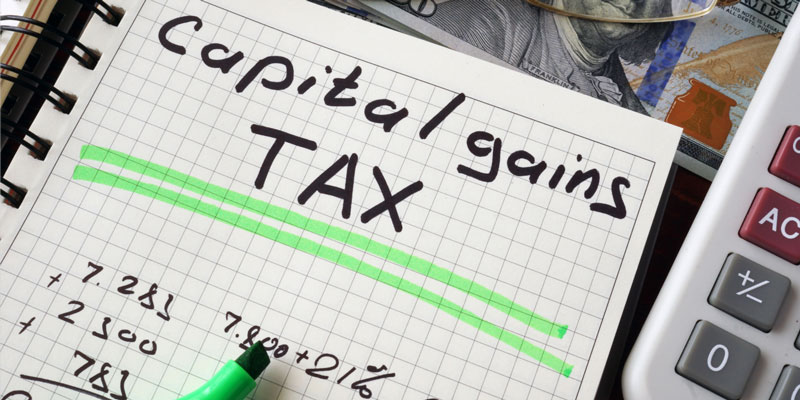Capital gains tax is the tax paid on profit from the sale of an asset, like a stock or real estate. It is calculated by subtracting the cost basis (the original purchase price plus associated expenses) from the asset's sale price and applying a predetermined rate to that difference.
For most taxpayers, capital gains tax can be quite substantial. Fortunately, there are strategies you can use to minimize your capital gains tax liability.
Here, we'll look at what capital gains tax is and how you can reduce it.
What Is A Capital Gains Tax?
A capital gains tax is an additional tax imposed on capital gains realized by individuals, corporations, and trusts over a certain amount (capital gain). These capital gains are generated when investments or properties are sold at a higher value than the initial amount bought.
The realized profit, determined by subtracting an asset's original cost or basis from its sale price, is then subject to taxation based on an individual's tax bracket.
Depending on the length that an asset has been held before being sold, capital gains can either be short-term (held for one year or less) or long-term (held for more than a year). Short-term gains are taxed at a much higher rate than long-term ones.
Capital gains tax is an income tax applicable to the profits from those transactions. The best way to understand how this works is to think of it like any other income: the more you earn in profits, the more taxes you need to pay.
It makes it essential to assess your total capital gains before filing taxes. You must consider the profit achieved from any sale of property or investments for the current fiscal year.

Which Assets Qualify For Capital Gains Tax?
When it comes to capital gains tax, many individuals must know the assets that qualify for such taxation. The simplest answer is that almost all assets that appreciate in value over time are subject to capital gains taxes when sold.
This range of assets includes things like real estate, stocks, bonds, mutual funds, certain cryptocurrency exchanges, homes, vehicles, and even collectibles such as art or antiques, jewelry, and household furniture when sold over specific values.
Investment assets are generally taxed at long-term preferential rates, provided the asset is held for more than a year before being sold. Ultimately, knowing your liabilities is essential to properly secure your financial future and enjoy any gain from it.
How You Can Reduce Capital Gains Tax
However, there are many strategies you can follow to reduce your capital gains tax liability. Here are some of them:
Utilize Tax Loss Harvesting
Tax loss harvesting works by offsetting potential capital gains with realized losses from other investments. This strategy allows you to reduce your taxable income and maximize your after-tax returns. It can save you thousands of dollars in yearly taxes if done correctly.
For example, let's say you have two stocks in your portfolio — one that has increased in value and one that has decreased since you purchased them last year. To utilize tax loss harvesting, you could sell the stock that has declined in value and use those losses to offset any potential capital gains taxes associated with selling the higher-valued stock.
In other words, if you have $5,000 in capital gains and $3,000 in capital losses from selling other investments, only $2,000 of the original gain will be taxable. This technique can reduce or even eliminate your capital gains tax liability and ensure that you keep more of your profits.
Invest for the Longer-term
Investors holding on to their investments for over a year will benefit from lower long-term capital gains rates than short-term rates applied to assets held less than a year.
For example, if you're in the highest marginal tax bracket (37%), long-term capital gains are taxed at 20%. That's a 17% difference! It pays to hold on to your investments for as long as possible to take advantage of these lower rates before selling them off.

Be Charitable and Give Away Appreciated Assets
By donating appreciated assets such as stocks or mutual funds directly to charity rather than selling them first and then donating cash, you can benefit from substantial savings on your taxes while also doing something good for others—a win-win.
When donations are made directly through a brokerage account instead of through cash payments, donors don't pay any capital gains taxes on the appreciation of their assets before the donation date. The resulting savings can add up quickly and significantly impact your bottom line come tax time!
Investment Strategies
Another way to reduce your tax liability is by utilizing different investment strategies. For instance, if you plan on investing in stocks or bonds, look for those with lower dividend yields and higher liquidity. It will help minimize the taxes you owe on your profits.
Additionally, consider investing in mutual funds or exchange-traded funds (ETFs) instead of individual stocks—this can help spread out the risk and provide more consistent returns over time.
Finally, consider investing in index funds; these typically have low fees and offer broad exposure to different markets, which can help lower your overall tax burden.
Final Takeaway
Reducing your capital gains taxes can be simple and manageable! Simple strategies such as tax loss harvesting, smart investment strategies, or making charitable donations directly from appreciated securities can significantly reduce your overall tax burden. And you can ensure that you keep more of your hard-earned money.
Make sure to consult with a financial advisor before implementing any changes so that they can review all applicable laws and regulations regarding reducing capital gains taxes.




